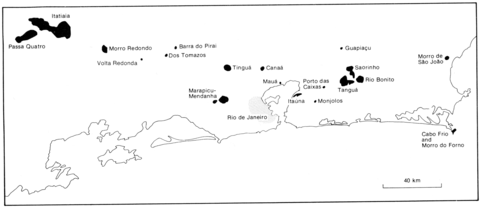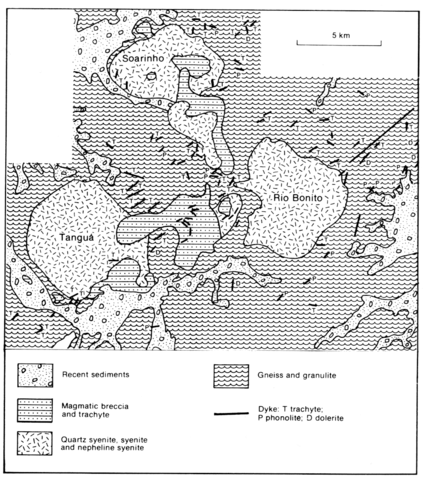stripes
This is a multiple intrusion covering approximately 30 km2 which is related to the nearby Tangua and Rio Bonito (Fig. 2_206) intrusions. Emplaced in Precambrian gneisses of the Paraiba-Desengano Series, the main body is composed principally of syenites which may contain quartz or feldspathoid and are rich in biotite, but with subordinate aegirine/aegirine-augite and amphibole. The elongated body in the southeast of the complex comprises pulaskites. There are lesser amounts of alkali granite. Extensive trachyte breccias cut the syenites and consist of angular blocks up to 1 m in diameter of gneiss, trachyte, pegmatite and syenite. Trachyte dykes are very numerous both within the intrusion and cutting the gneisses and comprise K-feldspar, aegirine, biotite, amphibole, opaques and calcite. Lamprophyre and phonolite dykes are also abundant, but the latter are probably related to the nearby Rio Bonito and Tangua intrusions.
LIMA, P.R.A. dos S. 1976. Geologia dos macicos alcalinos do estado do Rio de Janeiro. Semana de Estudos Geologicos, Itaguai: 205-59.
VALENCA, J.G. and KLEIN, V.C. 1984. Complexos alcalinos situados a leste da Baia de Guanabara, Rio de Janeiro. Anais Congresso Brasileiro de Geologia, 33: 5317-33


